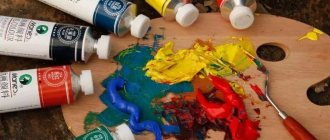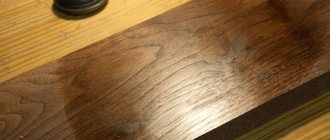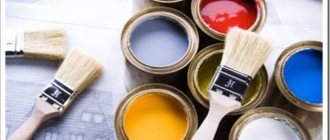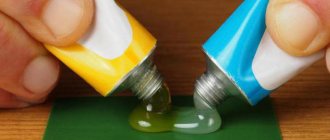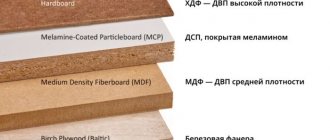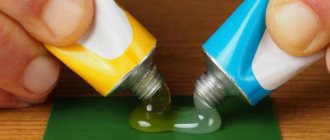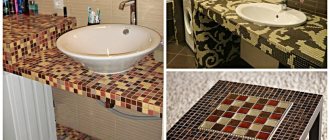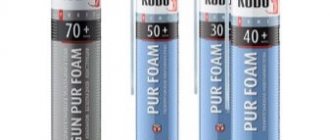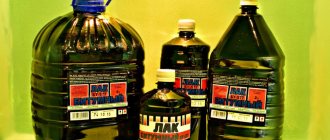Solvents - dissolve, diluents - dilute
Let's first look at the terminology.
Solvent is an organic volatile liquid (hydrocarbon, ketone, alcohol, ether, etc.) or a mixture of similar liquids used to dissolve film-forming substances and give the necessary consistency to the paint and varnish material.
Thinner is an organic volatile liquid used to dilute paints and varnishes in order to reduce their viscosity and make them suitable for application to the surface to be painted. — Directory of paints and varnishes
As you can see, the essence of the action of solvents and thinners lies in their very names.
Solvents are, first of all, those liquids that are introduced into paintwork materials at the factory during manufacturing. Since the base of the paint and varnish material (binder) is usually either a very viscous or solid substance, the addition of a solvent allows it to be converted into a form convenient for further work. Thanks to the solvent, the paint (primer, varnish) is maintained in a liquid state until it is applied to the surface and does not dry out.
It is not difficult to conclude that if a solvent is capable of influencing the structure of paint and varnish components, then it is a liquid of a rather aggressive composition.
Thinners are less aggressive. Unlike solvents, they do not dissolve resins, but only dilute their solutions to the required viscosity.
In most cases, the liquids that we pour into primers, enamels and varnishes before use do not have to dissolve anything at all. Their task is to correct viscosity, that is, they should work precisely as thinners.
Solvents and thinners differ in composition and properties
Solvents and thinners differ in composition and chemical properties.
Solvents contain aggressive alcohols, petroleum distillates, etc. Thinners contain various emulsions and do not contain alcohols and do not have dissolving ability. Thus, thinners have less chemical activity than solvents.
Requirements for solvents
- dissolve synthetic resins in paint to obtain paint in a liquid/viscous state.
- must be volatile in order to evaporate after application and leave behind an even film of applied paint.
Factors influencing the choice of solvent
- ability to dissolve
- evaporation rate
- toxicity
- price
- smell
Requirements for thinners
- must be compatible with solvents contained in the paint
- must be volatile and evaporate when the paint and solvent dry, leaving behind an even film of paint.
Functions of thinners
- adjust paint viscosity
- control and regulate paint drying time (slow thinners for summer and fast thinners for winter) and thus prevent painting defects (boiling, loss of gloss, etc.)
Only “relatives”
But the fact is that the same liquids can behave differently with different paintwork materials: for some resins they can be thinners, and for others they can be aggressive solvents.
Therefore, the use of unregulated thinners may lead to incompatibility with the diluted material, with all the ensuing consequences. Sometimes this property of a “non-native” diluent can very effectively reduce the viscosity of a material, but God forbid it will negatively affect the process of film formation... And if the “kinship” is violated, this is often exactly what happens.
The fact is that each thinner is developed strictly for a specific material, taking into account compatibility with the base and additives in its composition. When adding certain liquids to the formulation, the developer of paints and varnishes calculates the sequence and rate of chemical reactions, so both the drying process of the material and the quality of the final paintwork (hardness, gloss, etc.) depend on the correct choice of thinner. That is why it is so important to use only liquids recommended by the manufacturer to dilute paints and varnishes. By replacing a branded product with some “left” one, we initially doom ourselves to failure.
Meanwhile, such a replacement is practiced quite often: painters choose high-quality expensive primers, paints and varnishes, but instead of the recommended thinner they pour the cheapest domestic liquids, and after problems arise they begin to blame the paint manufacturer for everything.
Domestic solvents of the 645-651 series were initially developed for working with nitro enamels. They are in no way intended for diluting modern paints and varnishes, especially foreign-made materials.
Types of solvents
White Spirit
Solvent gasoline is a product of petroleum distillation. Its physical characteristics are as follows: a transparent, colorless liquid. Application area: dissolution of nitro paints and some types of resins, as well as oil paints. In the case of paints and varnishes, the dosage of white spirit must be limited to 10% of the total mass of the paint and varnish material.
Turpentine
A colorless, often transparent, sometimes with a reddish or dark red tint, a liquid that is usually used to dilute paints and accelerate the drying of paintwork. Turpentine is mainly used to dilute oil paints. If you choose between purified and unrefined turpentine, then for painting surfaces you should pay attention to purified turpentine.
Turpentine is highly flammable. Wood (unrefined) turpentine is obtained by dry distillation of wood; gum turpentine - through the distillation of coniferous resin. The first must undergo additional processing, due to which the coloring components contained in wood turpentine will disappear from the composition of the solvent.
To understand whether you are satisfied with the quality of turpentine, you need to mix drying oil and turpentine in equal proportions onto the surface. If after a day a strong film remains on the paintwork, the quality of the solvent is undoubted.
Gum turpentine, or, as it is also called, turpentine oil, is more environmentally friendly in contrast to wood turpentine: it is distinguished by a calmer smell and lightness.
Turpentine is also used for degreasing coatings, despite the high cost of this solvent, which is justified by the high quality of the working material.
Acetone, amyl acetate, ethyl acetate
Solvents that are used in the case of nitro paints. Since these substances mix quite easily with water, it is necessary to ensure that it does not get into them: this can cause whitening of the transparent film. If you add butyl alcohol solvents to the composition of these substances, the gloss of the varnish film will significantly improve.
Solvent
Technical coal is a mixture of aromatic hydrocarbons that are obtained in coke production during the rectification of purified fractions of crude benzene. Physical characteristics of the solvent: it is a transparent, colorless liquid, it is available in three grades - A, B, C, which differ in the following parameters: boiling point, density, small fluctuations in the content of chemicals such as sulfur and phenols.
Solvent is a high-quality paint solvent, however, due to its toxicity, solvent is not as popular as turpentine. Solvent is used only for diluting pentaphthalic and glypthal paints.
Dichloroethane
The next solvent that needs to be mentioned is. This colorless, slightly flammable liquid has a chloroform odor and also tends to turn yellow when exposed to sunlight. Precautions when using this thinner: a mandatory condition when working with this substance is the use of rubber gloves, since the thinner, due to the specific chemical composition, can significantly affect the skin of your hands.
Driers
These are special additives that help improve the decorative effect, as well as the water resistance of the finished dye composition. In addition, they can significantly reduce the amount of time required for drying oil paints, varnishes, drying oils, and oils. However, these additives have a rather serious drawback: when used, the paint coating becomes extremely fragile, and therefore it is recommended, if possible, to do without their use when treating the surface.
Ideal solvents for some types of resins are substances such as gasoline and kerosene. They are also used in washing hands contaminated with paint, as well as in cleaning work tools.
Do no harm!
Most traditional domestic solvents are extremely reactive products. Take, for example, the well-known solvent 646 (from a physicochemical point of view, this is precisely a solvent). This is a complex product that includes more than seven components (toluene, ethanol, butyl acetate, butanol, ethylcellosol, acetone, etc.). Such an aggressive composition allows you to effectively dissolve many organic substances, which is what made this solvent so popular.
But what happens if you add this solvent to, say, acrylic enamel or varnish? Or a base?
As already mentioned, the paint and varnish manufacturer selects certain solvents for its products not anyhow, but taking into account the speed and uniformity of evaporation. And the components present in cheap solvents do not contribute to normal evaporation, rather the opposite.
Thus, acetone, which is part of the 646th solvent, is too volatile and does not ensure optimal drying of the film during evaporation. It evaporates too quickly, which leads to the immediate formation of a surface film that prevents the release of residual solvents from the depths of the layer. The result is the familiar boiling, as well as a decrease in gloss and low coating hardness.
Alcohols that are part of domestic solvents also have an extremely negative effect on the film formation process of acrylic paints and varnishes. As you know, alcohols contain water, and water interferes with the normal polymerization of acrylic materials, “interfering” with the reaction, causing it to proceed incorrectly. As a result, instead of a durable polymer film, we get a “loose” coating that is susceptible to shrinkage and has a low gloss.
It should also be remembered that solvent 646 is aggressive towards many types of plastic.
If we talk about adding non-recommended liquids to base enamels, this can cause “apple-coloring” and stripes of different colors. And be prepared for the fact that these defects can only appear after varnishing and the painted surface has completely dried. There have been cases when “clouds” appeared several hours before the car was delivered to the client. Pleasant, as they say, is not enough.
It has also been noted that the aggressive components of domestic solvents “burn” some particularly sensitive pigments in the composition of enamels. This distorts the color of the paint, which is especially noticeable on light colors. For example, white enamel acquires a beige tint after adding solvent. This color in itself may be beautiful, but for some reason the car owner objects...
Thinners and solvents for paints and varnishes. Types, properties
Some terminology
Solvents are volatile liquids that have the ability to completely dissolve the film-forming substance of a paint and varnish material.
Diluents are liquids that do not dissolve film formers themselves, but serve to dilute ready-made solutions. Excess diluent may cause sedimentation or cloudiness of the film-forming solution.
The division into thinners and solvents is arbitrary, since the same liquids are thinners for some and solvents for other film formers. In addition, at present, many film-forming agents are used in the form of dispersions rather than solutions, and in such cases, the ability of the solvent to dissolve not the film-forming agent, but other components of the paintwork material comes to the fore.
Solvents and thinners are not part of the cured paint coating, since they evaporate from the applied layer during the drying process, however, the composition and properties of solvents largely determine the properties of liquid paints and varnishes (their viscosity, drying speed, toxicity, flammability, etc.) and modes of their use .
In English-language descriptions of paint and varnish mixing recipes, in addition to the terms “solvent” (solvent) and “diluent” (thinner), you can often find the word “thinner”. This term is used to refer to a liquid (or mixture) introduced into a paintwork material immediately before its use. In Russian, "thinner" is more often translated as "solvent", although in fact it can be both a solvent and a thinner. The purposes of introducing this component into the working solution are:
— reducing the viscosity of the coating material to a level that ensures easy application using the selected equipment, better wetting of the substrate and penetration into it;
— adjusting the surface tension of the liquid to ensure good spreading;
— increasing the drying time of the liquid layer for better leveling of the coating;
— regulation of the conductivity of the material, which is important in the case of electrostatic deposition;
- Reduce solids to produce uniform thin films and open-pore finishes.
Chemical nature of solvents
By their chemical nature, solvents for paints and varnishes usually belong to one of the chemical groups listed below.
Water is one of the substances often used in paints and varnishes, both as a solvent and as a diluent. In recent years, water-based paints and varnishes, which are a dispersion of a film former in water, have become increasingly popular.
Petroleum hydrocarbons are a mixture of hydrocarbons, mainly saturated ones. They differ in distillation fractions: gasoline, naphtha, kerosene, etc.
Aromatic hydrocarbons (toluene, xylene, benzene, solvent naphtha, etc.) dissolve well many oils, natural and synthetic resins. Aromatic hydrocarbons are toxic, but have good solubility and low cost. They can be used as thinners in nitro varnishes and nitro enamels.
Styrene occupies a special place among aromatic hydrocarbons as solvents. It dissolves polyester resins well and, under certain conditions, is capable of polymerization and copolymerization, i.e. to transformation from a solvent into a film former. Like other solvents in this group, it is highly toxic.
Chlorinated hydrocarbons (dichloroethane, trichlorethylene, etc.) are good solvents for oils and many resins. They are very toxic, but not flammable.
Alcohols (ethyl and butyl, isobutyl, isopropyl, etc.). Alcohols are used for the preparation of alcohol varnishes, dissolving shellac, sandarac, and as thinners for solutions of colloxylin in nitro-lacquer materials.
Ethers . For example, ethylene glycol monoethyl ether dissolves colloxylin, glypthal and other resins, and is used in nitro varnishes to slow down their drying.
esters (ethyl acetate, butyl acetate, amyl acetate, etc.) dissolve colloxylin well and are widely used in nitrocellulose-based paint and varnish compositions.
Ketones . The most widely used is acetone, which is a good solvent for many resins, oils and fats.
Terpenes . An example of a solvent consisting of a mixture of terpenes is turpentine, which dissolves oils and many resins. Gum turpentine is the most highly valued, but due to its high cost, cheaper turpentines based on saturated petroleum hydrocarbons are often used.
Solvent properties
Solvent power
Dissolution is a chemical process in which the “affinity” of the molecules of the solvent and the solute plays an important role. The general rule is: “like dissolves like.” For example, hydrocarbon solvents, which are non-polar, are generally suitable for dissolving relatively non-polar film formers such as oils or alkyds. Polar solvents such as alcohols are more suitable for dissolving relatively polar film formers such as cellulose nitrate or urea formaldehyde resins.
The dissolving ability of solvents in relation to film-forming agents is assessed by the viscosity of the solutions. At the same concentration of the same polymer, solvents that form solutions with lower viscosity have the best dissolving ability.
Viscosity reducing ability
The amount of solvent (diluent) that must be added to the polymer to obtain the required viscosity of its solution depends on the chemical nature of the solvent.
The ability of a solvent to reduce viscosity is affected by:
1. Viscosity of the solvent itself
2. Solvent ability in relation to the film-forming substance.
Resins are characterized by a decrease in viscosity as the resin concentration decreases. The rate of change in viscosity is greater for a “good” solvent, since the polymer molecules move completely into the solvent and are “stretched” and straightened out in it. In a “bad” solvent, the chains are less elongated, the mixture is more like a dispersion, and a true dispersion has a viscosity that is little dependent on dilution.
Aqueous solutions may exhibit anomalous viscosity-concentration relationships and, within a certain range, viscosity may even increase with dilution.
Evaporation rate
The rate of solvent evaporation has a great influence on drying time and the appearance of the coating.
Obviously, from the point of view of the productivity of the finishing process, a high drying speed of paintwork materials is more beneficial. At the same time, a short drying time leads to a deterioration in the wetting of the wood surface with liquid material (and therefore to a deterioration in adhesion), and also does not give the wet layer enough time to spread and form a smooth surface before curing (and this can lead to the formation of such defect like shagreen).
Therefore, choosing the right solvent is always a difficult compromise. For proper selection, it is necessary to know the nature and rate of change in the viscosity of the film-forming agent depending on its concentration in the solvent, and the type of solution (dispersion). In the case of aqueous dispersions, it is often necessary to add water-compatible, slow-evaporating co-solvents to slow down the drying time. Therefore, the best solution is always to fully rely on the knowledge and experience of the developer of the paint and varnish material and use the solvents recommended by him in the amount specified in the formulation of the working mixture.
The rate of evaporation of a solvent is related to its boiling point and vapor pressure. The higher the boiling point, the slower the solvent evaporates; The lower the boiling point and the higher the volatility, the faster the solvent evaporates.
Thus, the boiling point is an indicator of the volatility of the solvent. Depending on the boiling point, solvents are divided into three groups:
— low-boiling (boiling point below 100°C);
— medium-boiling (boiling point between marks from 100°C to 150°C);
— high-boiling (boiling point 150°С – 250°С).
Approximate boiling points and evaporation rates for common solvents are given in the table:
| Solvent | Boiling point, °C | Evaporation rate, points (the evaporation rate of n-butyl acetate is taken as 1) |
| Acetone | 56,1 | 7,7 |
| Methyl ethyl ketone | 79,6 | 4,6 |
| Ethyl acetate | 77,1 | 4,1 |
| Toluene | 110,6 | 2,0 |
| Isobutyl acetate | 118,0 | 1,4 |
| n-butyl acetate | 126,1 | 1,0 |
| Cyclohexanone | 155,6 | 0,3 |
| Butyl glycol | 170,6 | 0,1 |
The evaporation rate of solvents in mixtures cannot be predicted from individual evaporation rates due to the interaction of the solvents with each other and the binder.
The rate of evaporation of solvents from the applied wet paint layer also depends on the specifics of the film former, the temperature in the room, the speed of air circulation above the surface, the evaporation surface area, and the thickness of the layer.
Environmental impact
Boiling point and vapor pressure are also used as a key parameter to classify an organic compound as volatile. This classification is important because legislation restricts the use of such substances as hazardous to the environment.
Organic chemicals with low boiling points release significant amounts of molecules as vapor, liquid or solid into the environment. VOC (volatile organic compounds) are volatile organic compounds (Russian equivalent - VOC), i.e. vapors of organic substances released into the environment. In the European Union, VOC is considered to be any organic compound with a boiling point ≤250°C (measurements are made at standard atmospheric pressure of 101.3 kPa. Directive 204/42/CE of the European Parliament).
The use of chemical VOCs is regulated by law, especially indoors, as their high concentrations can have a negative impact on human health. As a rule, European manufacturers indicate the VOC content on the labels. The main source of VOC in paints and varnishes are solvents. The higher the VOC content indicated on the label, the more solvents the material contains, and the lower its dry residue. Those. virtually all solvent-based paints contain VOC. The lower the boiling point of the solvent, the more volatile the solvent, the more aggressive and has a stronger odor. Conversely, the higher the boiling point, the slower the solvent, the less aggressive, and the less pronounced the odor.
VOC-FREE materials are materials without volatile organic compounds. All components included in their composition have a high boiling point (more than 250 ° C). This makes them more environmentally friendly.
Flammability
Almost all organic solvents are flammable liquids. The flammability of a solvent is usually characterized by its flash point. Flash point is the lowest temperature of a volatile substance at which vapors above the surface are capable of flashing in air under the influence of an ignition source, but stable combustion does not occur after removal of the ignition source. The flash point should be distinguished from both the ignition temperature, at which a flammable substance is capable of burning independently after the ignition source is removed, and from the auto-ignition temperature, at which an external ignition source is not required to initiate combustion or explosion.
Flash point is used to classify solvents regarding potential hazards during use and transportation.
Electrical conductivity and electrical resistance
Resistance is a measure of opposition to the flow of electrical current and reverse conduction. Resistivity is measured in Ohm∙cm. The electrical properties of solvents largely depend on their polarity, and the electrical properties of liquid paints and varnishes are complex due to the presence of components with different properties.
Electrostatic spraying of liquid paints greatly improves transfer efficiency. The size of droplets of coating materials in a torch during electrostatic spraying is directly proportional to surface tension and dielectric constant, and inversely proportional to conductivity. Conductivity also affects the charging and discharging rates of droplets. Most electrostatic installations require a resistivity of 106-1010 Ohm∙cm, which can be achieved through the use of polar solvents. If this is not possible, other ionic additives (eg tetraalkylammonium sulfate) can be used. Water is very conductive and cannot be used with conventional electrostatic spraying. In such cases, special systems should be used, completely isolated - from the can to the gun.
Smell
Most organic solvents used for paints and varnishes have a fairly strong odor. The "smell threshold" is defined as the lowest perceived concentration of solvent in the air and differs for different solvents. In addition, people exhibit different sensitivity to odors. Because the odor of the solvent may be sufficient to prevent possible adverse effects, the danger of the solvent is not always related to the threshold of smell. Some solvents may be less odorous but very dangerous, and vice versa.
0
Author of the publication
offline 13 hours
Natallia Mazanik
0
Comments: 0Publications: 129Registration: 11/24/2019
Classification of substances
Based on their origin, mixtures are divided into organic and inorganic:
- Organic - aromatic and aliphatic hydrocarbon compounds, carboxylic acids, ethers and esters, alcohol-based solvent, nitro compounds.
- Inorganic - water, oxohalides, melts, fusible metals, nitrogen-containing compounds.
Inorganic mixtures are very specific. In everyday life, only nitric and sulfuric acids are used.
Based on the number of ingredients, single- and multi-component mixtures are distinguished.
- Single-component - include only 1 active ingredient. Typical representative: white spirit, acetone, toluene, butyl acetate. They are easy to use and quite effective, since the polar liquids in their base allow you to work with many substances.
- Multicomponent - include 2 or more ingredients. The combination of several active substances expands the capabilities of the mixture.
The volatility of the composition determines how quickly the paint dries after application. According to this characteristic they distinguish:
- highly volatile – evaporation number less than 10;
- medium volatile - from 10 to 35;
- low volatility - up to 50;
- compositions with very low volatility - more than 50 evaporations.
There are other classifications, for example, according to the stability of hydrogen bonds by boiling point: high-, medium- and low-boiling. This is important for the chemical and petroleum industries.
By type of dissolved materials
According to the specifics of their work, all solvents are divided into 4 large groups :
- for paints and varnishes – paints, varnishes, primers, adhesives;
- for building materials - for removing foam, bitumen. rubber, rust;
- household – cleaners for oil, grease, tape;
- artistic.
The first category is of greatest interest. Almost all of them are highly volatile organic compounds with a low boiling point. The choice depends on the type of paint.
| Solvent | LMB |
| Water | Water-based acrylic paints and varnishes |
| Petrol | Solvent for enamel and oil or bitumen paint |
| Turpentine | Oil-based and alkyd-styrene material |
| White spirit | Dissolves oil and alkyd enamels and paints, as well as bitumen varnishes and primers |
| Solvent | Glypthal and bitumen compositions, including those based on melamine alkyd resins |
| Xylene | Dissolves bitumen, glypthal and epoxy paints and varnishes |
| Acetone | Solvent for perchlorovinyl compounds |
Rules for working with solvents
Most paints and varnishes need to be reduced in thickness before application. Solvents should not be mixed if there are a few of them left in different bottles - an explosive mixture may result.
If you have to thin thickened paint that has been stored for a long time, it is important to find out what substance can be used to dilute it to the desired consistency. Using a substance that is not intended to work with this composition can ruin expensive imported dye, primer or varnish.
When dissolving, operating conditions are taken into account - temperature and humidity in the room, as well as a possible reaction when shaking, vibration or heating.
The big “disadvantage” of many chemical and organic solvents is their strong odor and flammability. If possible, the painting process should be organized outside the residential area or repairs should be carried out in a well-ventilated area in cool weather. Solvent vapors may ignite if exposed to direct sunlight.
White Spirit
White spirit is a common solvent for a wide variety of paints; it can be found not only in art, but also in any hardware store. White spirit is also great for washing brushes and palettes, removing dried paint, and degreasing canvas. It effectively dilutes the paint and evaporates quickly, the paint layer is thin and dries quickly, but at the same time, white spirit affects oil paints, disrupting their composition and binding qualities. Therefore, the disadvantage of this solvent is the fragility of the resulting paint layer and the dullness of the surface. In addition, white spirit can have a pungent odor, which causes discomfort during long-term use.
A great option is Lakka Bensini from Tikkurila. Affordable and with minimal odor.
Homogeneous solvents - what is their purpose?
There are a great variety of solvents of a homogeneous type, among them the following can be distinguished:
- water, which is a thinner, will be an excellent option for acrylic or water-based emulsions;
- gasoline is the best option for diluting bitumen, oil, and enamel paints;
- turpentine used for oil-based or alkyd-styrene paints;
- white spirit will be an excellent option for oil and alkyd compositions, for example, PF-115, 113, 266, as well as bitumen-type mastics, varnishes 66, primers GF-021;
- petroleum solvent is perfect for glyphthalic or bitumen paint and varnish compositions, melamine alkyd;
- petroleum-type xylene is suitable for epoxy resins, bitumen or glyphthalic paint compositions;
- Acetone is suitable for perchlorovinyl paints.
What is the best way to remove paints and varnishes from surfaces?
It often happens that during various types of painting procedures, paint particles end up on the floor or on walls or pieces of furniture. On delicate surfaces, its removal is carried out with combined type solvents, which are presented above.
But what to do with more delicate surfaces, such as laminate or wood? But here it would be better to use solvents of a homogeneous type, and initially it would be better to test their effect on a small and inconspicuous area. In addition, today there are solvents that are created specifically for removing old paints.
There is no such thing as too much safety
Personal protective equipment, glasses and respirators are a must when working with most types of chemicals with a strong odor. Security measures are never superfluous.
Even if the contents of the bottle seem quite safe, it is important to take all precautions. indicated in the packaging instructions. Quite harmless “Nail polish remover” with acetone can ignite if you work near a fireplace.
Volatile reagents can gradually accumulate in the body, and then work in the form of persistent allergies or skin irritations. Any prevention is better than wondering after the repair what kind of solvent this reaction is to.
Personal protective equipment, glasses and respirators are a must when working with most types of chemicals with a strong odor.
Solvents are classified as volatile, explosive, and flammable substances. For this reason, it is prohibited to transport solvents on public transport. It is better to be “over-vigilant”, especially when using a large capacity container, than to be negligent and suffer.
Review of the most popular brands
Among the manufacturers of the most popular organic solvents, taking into account the different types and purposes, experts indicate “Gasoline Galosh” or “Nefras”. It will easily degrease the surface for painting and enhance the fluidity of bitumen enamels, oil paints and organic varnishes.
The special name of the solvent BR-1 “Galoshes” was given due to its widespread use in industry (working with rubber and polymers). “Nefras” is an abbreviation for “petroleum solvent”, a volatile substance, a derivative of petroleum products.
Cleaners, degreasers, solvents and thinners are produced in a wide range by domestic manufacturers. GOST standards are observed in terms of the percentage of components and the chemical formula of each component of the caustic solution. Therefore, the quality of the contents and the properties of the solvents are the same.
The domestic enterprise Ultimax produces solvents “R-12”, “646”, “647” and “650”, as well as degreaser and white spirit of the same brand. This niche also includes “removers” for paint from metal (gels and liquids), but they have a different purpose.
Remembering what types of solvents there are, experts often call “P-4” and “P-12”, trimethylcyclohexanone, which is more effective than many substances. However, the label always indicates the scope of application, explosion hazard, approximate solvent consumption per 1 m2 when degreasing metal, compatibility with paints and thinners, and other characteristics.
It will easily degrease the surface for painting and enhance the fluidity of bitumen enamels, oil paints and organic varnishes.
Which solvent is better?
There are 3 types of solvents:
- highly volatile (white spirit, solvent, gasoline);
- medium volatile (kerosene);
- hardly volatile (turpentine, solvent 646).
White spirit is used mainly as a solvent for paints, oil paints, and enamels. It is produced from gasoline. Car enthusiasts also use this product to remove bitumen stains from the car body. White spirit is a solvent of the 4th class of danger to the human body.
Solvent is a very toxic solvent. Has harmful effects upon contact with skin. A person working with solvent must wear rubber gloves and a mask with goggles. Nowadays, it is used in the production of ink for large-format printing (posters, stands, posters), which guarantees high color fastness for 3-4 years.
Kerosene - as a solvent, this substance is, of course, strong, but very expensive. It works great with alkyd and oil paints. However, using rocket and aviation fuel as a solvent is an unjustified luxury.
Turpentine is a derivative of coniferous tree resins. It perfectly dissolves oils, fats, mastic, resins, shoe polish, etc. The main advantage of turpentine is that it well dissolves dried films from oil paints, drying oils, etc.
Solvent 646 is the most convenient and versatile solvent. In everyday life it is used as a thinner for paints and varnishes - it helps to bring them to the required consistency. Thanks to its chemical composition, solvent 646 copes with many materials (primer, some varnishes, enamel, putty, etc.). Its cost is not high, which, in fact, attracts the attention of buyers.
Transition solvents
In addition to universal ones, there is also a solvent for transition. They are not intended for thinning varnishes and enamels. Their purpose is to create an invisible transition between old and new paint or varnish. To do this, apply the transition solvent from a paint sprayer or aerosol can onto the dry “spray” in the transition zone of the varnish or acrylic paint.
It is extremely important to note that the solvent for transferring over varnish or acrylic paint and for transferring over the base, also called “Binder,” are completely different products. A paint binder is something like a transparent base. It is used so that the metallic grain does not stick out like a “hedgehog” in the transition zone, but “settles down” correctly, which will ensure a high-quality invisible transition.
Composite solvents - what is their purpose?
Solvents of this type include the following:
- No. 645, is nitrocellulose;
- No. 646, is universal;
- No. 647, suitable for nitro-enamel compositions or nitro varnishes for cars;
- No. 649, suitable for NTs-132k or GF-570Rk trains;
- No. 650, an excellent option for diluting NTs-11 or GF-570Rk car enamels;
- No. 651, an excellent option for oil formulations;
- No. R-4, for polyacrylate or perchlorovinyl compositions, paint and varnish compositions with the addition of vinylidene chloride or vinyl acetate;
- No. R-5, for epoxy or polyacrylate compounds;
- R-6, for compositions of melamine-formaldehyde type, rubber, polyvinyl butyral type;
- R-7, for diluting varnishes under number VL-51;
- R-11, for polyacrylate or perchlorovinyl compositions;
- R-14, for epoxy enamel compositions that are cured using isocyanate hardeners; — R-24, for perchlorovinyl compounds;
- R-40, for epoxy-type compounds;
- R-50, for cresol-formaldehyde or polyvinylbutyral compositions;
- R-55, for epoxy-ester compositions;
- R-189, for polyurethane type varnish;
- R-219, for polyester type resin compositions;
- R-1176, for polyurethane type paint or enamel;
- RL-176, for polyurethane, polyacrylate type compositions;
- RL-277, for polyurethane compositions.
Among other things, this type of solvent can be used to clean surfaces, degrease them, as well as remove paint and varnish residues from brushes or rollers, and wash spray guns.
